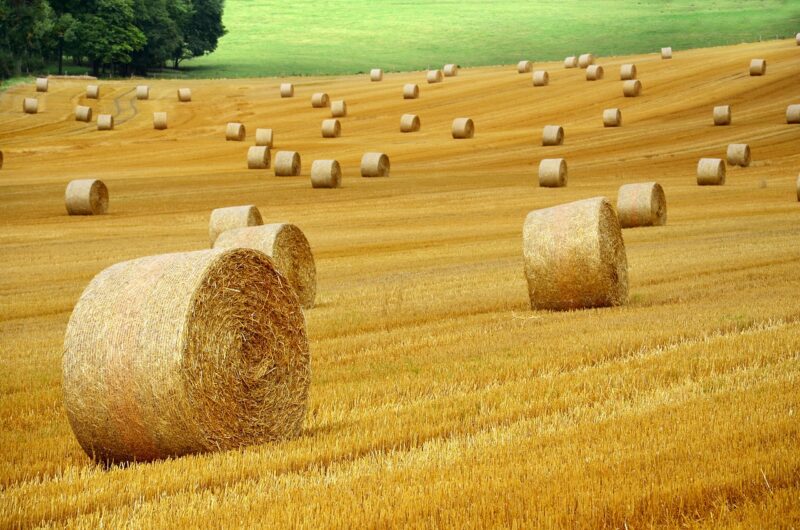Farming Practices Then and Now: Comparing Ancient and Modern Methods
November 15, 2024

Farming, one of humanity’s oldest professions, has evolved tremendously over the millennia. From ancient methods that relied heavily on human and animal labor to modern practices enhanced by technology, agriculture has undergone transformation that reflects societal changes, advances in knowledge, and the requirements of the growing global population. This article delves into the contrasts between ancient agricultural techniques and today’s innovative farming practices, examining how changes reflect our evolving relationship with the land.
1. The Origins of Farming: An Ancient Practice
Farming began approximately 10,000 years ago in the Fertile Crescent, a crescent-shaped region in the Middle East. Early humans transitioned from nomadic lifestyles of foraging and hunting to more sedentary ways, planting and harvesting crops. This era, known as the Neolithic Revolution, paved the way for the establishment of settlements and the eventual rise of civilizations.
Early farming practices were characterized by:
- Crop Selection: Early farmers practiced selective breeding and cultivation, favoring hardy crops such as wheat, barley, and rice that could thrive in their specific climates.
- Manual Labor: Work was primarily done by hand, with tools crafted from wood, stone, and bone, making farming labor-intensive.
- Animal Husbandry: Animals like goats, sheep, and oxen were domesticated, aiding in plowing, transportation, and providing fertilizer through manure.
These practices laid the foundation for sustainable farming methods that would last for centuries, highlighting a deep connection between people and the land they nurtured.
2. The Middle Ages and the Birth of Crop Rotation
During the Middle Ages, European agriculture saw significant advancements, including the introduction of crop rotation systems, which improved soil fertility and crop yields. Farmers began to understand the importance of diversifying crops and alternating them between seasons to prevent soil depletion.
The three-field system became popular, where one field was planted in the spring, another in the fall, and a third lay fallow to recover. This technique led to healthier crops and sustainable yields, showcasing the innovative spirit of medieval farmers.
Key characteristics during this period included:
- Technological Innovations: Tools such as the heavy plow and the horse collar emerged, increasing efficiency and productivity in farming.
- Establishment of Guilds: Farming groups formed guilds, leading to shared knowledge and practices which enhanced crop production.
- Irrigation Systems: More advanced irrigation methods were developed, particularly in regions like Asia and the Middle East, facilitating controlled water delivery.
These enhancements allowed for a dramatic improvement in food supply and population growth, fostering more stable societies.
3. The Industrial Revolution: A Turning Point
The late 18th and early 19th centuries witnessed the Industrial Revolution, intricately linked to agricultural advancements. The introduction of machinery transformed farming from an arduous manual process to a more efficient, mechanized endeavor.
Notable developments included:
- Mechanical Equipment: The invention of the seed drill, threshing machine, and mechanical reaper revolutionized planting and harvesting methods.
- Fertilization Techniques: The use of chemical fertilizers began to replace traditional compost and manure, enhancing crop growth drastically.
- Transportation Improvements: The expansion of railways facilitated the transport of agricultural products to markets, contributing to globalization and trade.
This era set the stage for modern mass production and the economies of scale that characterize farming today.
4. Modern Farming Practices: Efficiency Meets Technology
Today, farming practices have transcended their ancient roots, blending tradition with cutting-edge technology to meet the demands of a growing global population. Several innovative methods have been pioneered:
- Precision Agriculture: Farmers now use GPS, drones, and sensors to monitor crop health and optimize resources, leading to higher yields with less wastage.
- Hydroponics and Vertical Farming: Growing crops in nutrient-rich water solutions or vertically in controlled environments allows food production in urban settings, increasing accessibility.
- Genetic Modification: Biotech advancements enable the creation of genetically modified crops resistant to pests, diseases, and climate challenges, ensuring food security.
Modern farming focuses on maximizing efficiency while minimizing environmental impact, often guided by principles of sustainability and organic farming practices.
5. Sustainability: Looking to the Future
As the world faces challenges such as climate change, soil depletion, and resource scarcity, the focus on sustainable farming practices has never been more critical. Modern farming increasingly incorporates environmentally friendly methods such as:
- Crop Diversification: Rotating and diversifying crops improve soil health and decrease dependency on chemical fertilizers.
- Organic Farming: Reducing the use of synthetic chemicals and promoting organic methods preserves biodiversity and enhances food quality.
- Conservation Tillage: Practices that minimize soil disruption help preserve the natural ecosystem, reducing erosion and retaining nutrients.
Farmers, researchers, and policymakers are working together to implement sustainable methods that protect the environment while continuing to provide for an ever-growing population.
Conclusion: Bridging the Gap Between Past and Future
Farming practices today reflect a rich heritage of knowledge, innovation, and adaptability. By learning from the successes and challenges of ancient methods, modern agriculture continues to evolve toward more efficient, sustainable practices. The journey from the plow to precision agriculture is a testament to human ingenuity and our deep connection to the earth. As we explore sustainable farming solutions, we must honor our agricultural roots while embracing the innovations of the future.
By understanding the history of farming and the ongoing advancements in agricultural technology, we can ensure that future generations inherit a robust, sustainable farming landscape that continues to thrive for years to come.







